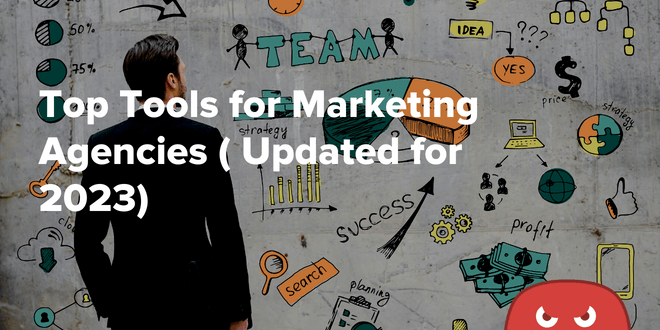
Is your marketing agency able to quickly and accurately check performance metrics (such as SEO, CRO, PPC, etc.), or are you always playing the guessing game?
Is communication between your team effortless, or do you struggle to get everyone on the same page? Do you have a reliable system for assigning and completing tasks, or are you constantly switching back and forth between email threads and messaging apps?
If you relate more to the second part of each question – that’s a sign that your marketing agency isn’t equipped with the right tools.
Marketing campaigns involve many moving parts, such as brand-building, content marketing, social media, and CRO (conversion rate optimization), among others.
Digital marketing tools like CRMs, project management software, and messengers like Slack can help you avoid drowning in work. Access to crucial analytics and metrics is also necessary if you want to find any sort of repeatable success with your marketing efforts.
There are many types of marketing software, so it can be a bit confusing to know which programs you need and can do without.
That’s why we’ve put together this extensive guide containing essential tools for marketing agencies in the following categories:
- Analytics Tools
- SEO Tools
- Team Collaboration & Project Management Tools
- Website Creation Tools
By the end of the list, you’ll know about a ton of helpful marketing agency tools you can use to increase your productivity, communication, SEO, and revenue in 2023.
Why Digital Marketing Agencies Need the Right Tools
You may wonder why you need to invest in many expensive platforms, programs, and applications.
After all, you’ll save lots of money by not using these tools, so why should you bother?
Let’s consider a quick example to illustrate why marketing tools are so essential. Say that you start an SEO campaign with the goal of ranking in the top spot for a certain keyword on Google.
For 6 months, you plug away creating content, auditing your site, making technical tweaks, and building backlinks. However, you don’t check any analytics during this time, which means you’re basically shooting in the dark.
Sure enough, when you finally do check your rankings, you discover that Google hasn’t even indexed your site, meaning you’re MIA from the SERPs (search engine results pages).
As a result, all the time, effort, and money you spent during the last 6 months were for nothing.
This scenario could have been avoided by using the proper tools to monitor, analyze, and tweak your strategy (not to mention that Google Search Console would have let you know if your site was indexed or not in about 5 seconds, but more on that in a bit).
Besides analyzing your performance, you can also use tools to improve your productivity through marketing automation software drastically.
Collaboration tools such as Asana and Trello make knocking out projects a breeze, and tools like WordPress allow you to design gorgeous web pages without having to write a single line of code. That’s why you need to equip your agency with the proper tools if you want to grow your business and scale at the same time.
Top Analytics Tools
To learn what works and what doesn’t, you need a way to pour through your data and make sense of it.
You need to make sense of website visitor behavior and a way to judge how you’re doing in relation to your competitors.
That’s why analytics tools are an absolute must for any marketing agency that wants to find success. Without further ado, here are our picks for the best analytics tools available in 2023.
Google Analytics

If you want to gain in-depth insights into your web visitors’ behavior, Google Analytics (GA) is a must-have reporting tool.
The best part?
It’s completely free, so implementing it won’t cost your marketing agency a dime.
Whether you’re checking to see how long visitors spend on each page or how well your landing pages are converting, Google Analytics is your one-stop shop for it all.
Another plus is that the website data comes straight from Google, so it’s far more accurate than marketing platforms that rely on page tags.
While GA has many features, some of its most helpful reports for marketers and SEOs include the following:
- Customer Behavior Report. Running this report will reveal your target audience’s trends & spending habits – which is great for personalizing content and predicting customer value.
- Browser Report. This one is a necessity for eCommerce businesses, as it will let you know where users are finding your site, which devices they use, and which browsers/devices are getting the most conversions.
- Keyword Performance Report. SEOs need to pay special attention to this report, as it tells you which queries are bringing in the most traffic, leads, and conversions – which will guide your keyword research efforts going forward.
One downside to GA is that the program is a bit complicated due to its extensive features, so it will take a considerable time investment to learn all the ins and outs. Still, you can’t beat free, and GA has invaluable data – so it’s worth the learning curve.
Google Tag Manager
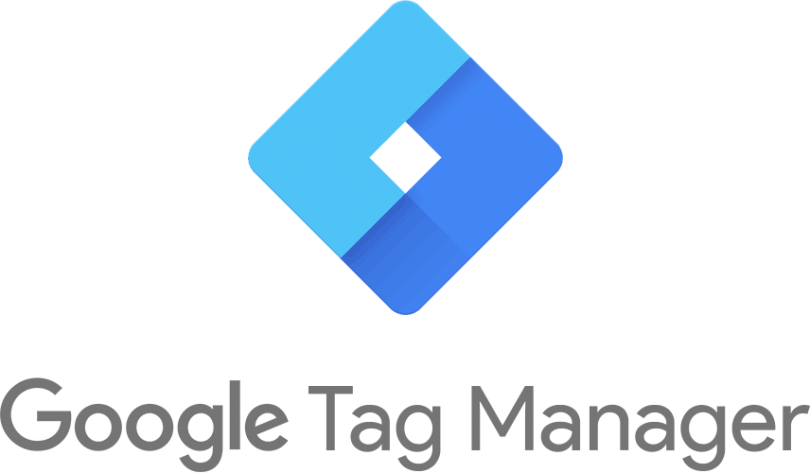
In order to track a metric, such as the conversion rate of a web page, you need to set up a tag for it.
What’s a tag?
Broadly defined, a website tag is a tool used to gather data or add new functionalities to a website. Tags often take the form of a snippet of Javascript, a transparent image, or a small pixel that you install onto your web pages (some, not all).
More often than not, tags are used to track user behavior and gather data.
For instance, you need to install a conversion tag in the code to track how many conversions a landing page gets.
Google Analytics, remarketing, conversion tracking, Google Ads, and other digital marketing tools require the use of tags, which is why Google Tag Manager is such a useful tool.
It allows you to easily manage and update all your website tags in one location.
You can also come up with your own ways to track user activity using tags, as the tags are highly customizable, so you’ll be able to make full use of your creativity.
Hotjar
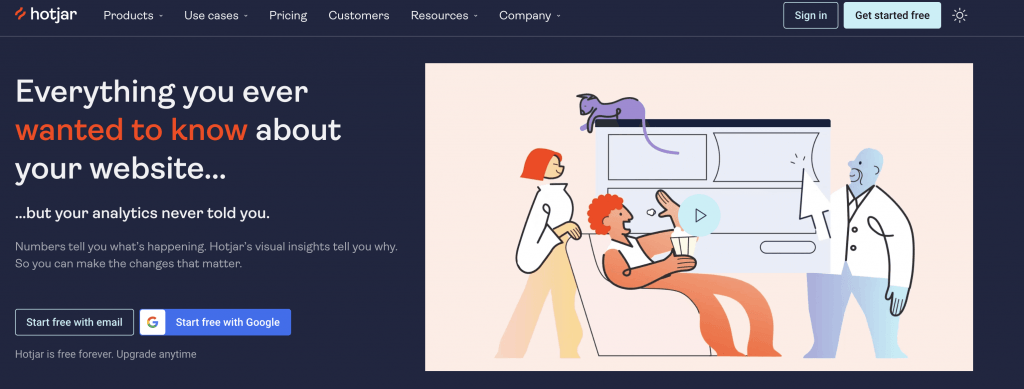
Sometimes it’s nice to have more than static metrics to analyze website user behavior – and that’s where Hotjar comes into the picture.
What does it do differently?
Hotjar lets you view videos of your user sessions, making it effortless to identify their pain points and the content they engage with the most.
All user sessions on Hotjar are available for playback and review, granting you invaluable insights into common user behaviors, activities, and their overall impression of your website.
This tool is particularly useful for graphic design UX designers, as viewing videos of user sessions can help them perfect your user experience, which will boost your dwell time, lower your bounce rate, and increase conversions.
Funnelytics
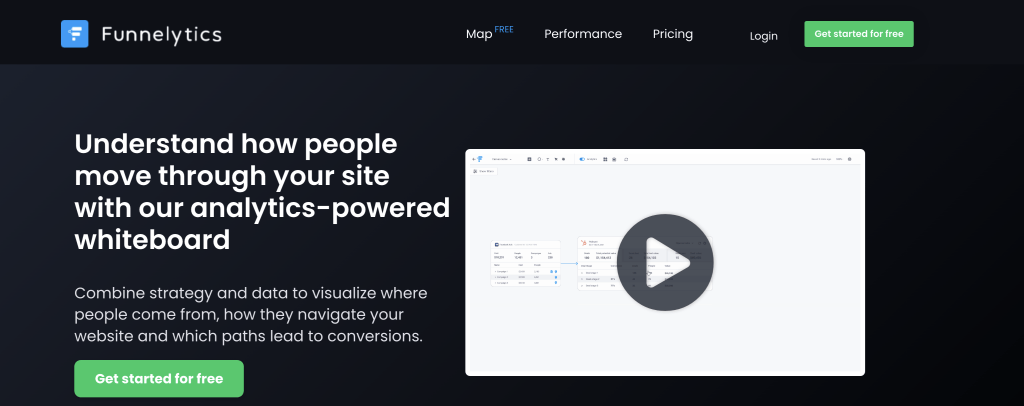
Every aspect of Funnelytics is designed to bolster the effectiveness of your sales funnel, as you’ll be able to take a step back and see the big picture with its visualization tools.
By visualizing your sales funnel in an easy-to-digest format, you’ll be able to identify gaps in your marketing strategy. Many inbound marketing agencies don’t utilize such a tool, so you’ll be able to push ahead of your competitors by optimizing your funnel.
Other features include the ability to perform A/B testing on your marketing campaigns, as well as the ability to plan, build, & optimize a new sales funnel from scratch with its forever-mapping tool.
Funnelytics also has:
- Heat mapping to see which areas of a web page see the most action
- Enhanced security & data protection
- ROI reports seeing how effectively your funnel is working
- An extensive vault of sales funnel templates
If you’ve been having trouble with the conversion rates of your landing pages, Funnelytics may be the tool you need to raise them again.
Helpful CRO Tools
Next, let’s take a look at some tools that will help you optimize your conversion rates. CRO is a necessity for any marketing campaign, especially SEO and content marketing.
Many beginner agencies make the mistake of focusing entirely on SEO and neglecting CRO, which generates lots of traffic but doesn’t lead to an increase in revenue.
That’s why you’ll need to incorporate CRO techniques & tools into your marketing strategy to find success with any type of campaign.
Designing a website to convert means providing an intuitive, fast, and pleasant user experience, engaging and persuasive content, and a convincing CTA to encourage the desired action. Here are the top tools available to help you boost your conversion rates.
HOTH Conversion Rate Calculator
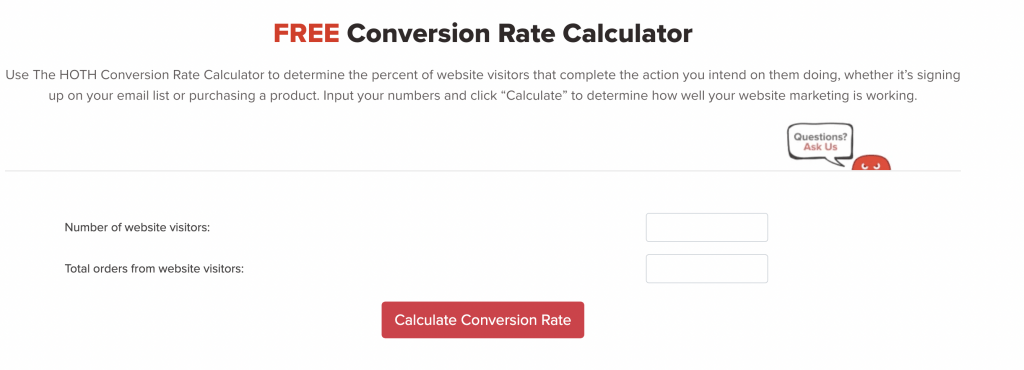
You won’t be able to improve your conversion rates if you don’t know what they are, so don’t be shy about using our free Conversion Rate Calculator from The HOTH.
To use it, you only need to know two simple metrics; how many website visitors you have and how many orders they placed. Once you plug those numbers in, you’ll get to see your conversion rate.
How do you know if you have a reasonable conversion rate?
As a rule of thumb, rates between 2 – 5% are considered ‘good,’ and anything above that is outstanding.
So if your conversion rate is below 2% (or if you’d like to get it above 5%), you’ll have some work to do.
Google Optimize
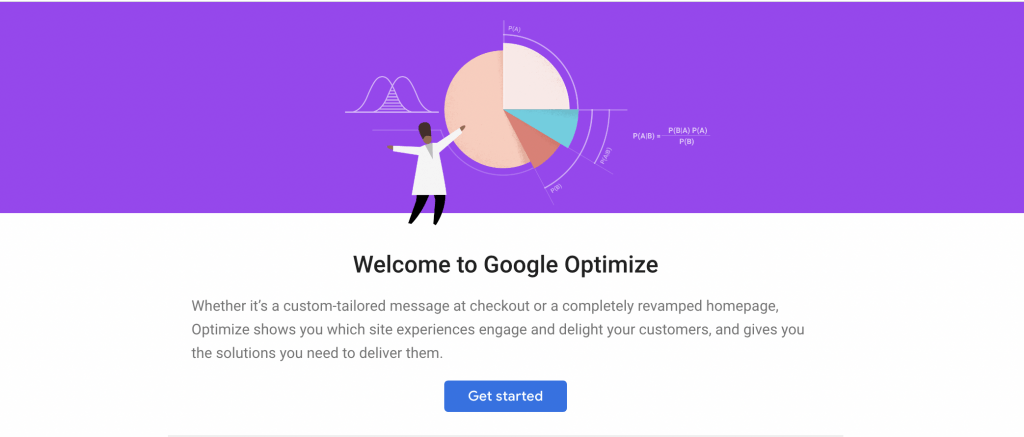
This offering from Google is free for medium to small-sized businesses, and it’s an excellent CRO tool.
With it, your marketing team can test their hypothesis and assumptions on what will increase conversion rates. There are tools to run split and A/B tests, as well as to personalize user experiences.
Google Optimize boasts many integrations with other Google tools, such as Google Analytics and Google Ads, so you’ll be able to dive deep into your user data to find the most valuable insights.
While its free version contains plenty of features for smaller companies, enterprise-level businesses will benefit from opting for Optimize 360, its paid version.
Optimizely

A bit of a pricier option, Optimizely boasts one of the best user interfaces for split-testing software. It has a myriad of features for running experiments & A/B tests on your web pages and mobile apps.
Optimizely is complex enough for technical users yet approachable enough for the casual business user to feel right at home.
It’s definitely one of the most robust ways to carry out tests and experiments on your platforms, but the $36,000 annual price tag may deter some smaller companies. As a result, this tool is best for larger agencies that require complex experiments or A/B testing on a large scale.
Convert

This is another CRO platform that offers templates, experiments, and A/B tests, but it’s considerably less expensive than Optimizely.
At $699 per month, Convert has an annual price tag of $8,388, which is far more reasonable for smaller companies than $36,000.
Convert still has many in-depth features for multivariate tests and experiments, and the setup process is pretty straightforward. While the program can be a bit complex at times, they offer 24/7 live support from professionals who know the platform inside and out, and they’ll be able to answer any questions you may have if you become confused.
Leading SEO Tools for Marketing Agencies
In the current era, SEO is nearly impossible to avoid if you want to find success.
68% of experiences begin with a search engine, even when the intent is local.
That means even if you run a local mom-and-pop store, you’ll still need to have a presence on search engines if you want to stay competitive & grow your business.
Yet, SEO is a marketing tactic that requires lots of monitoring, analyzing, and tweaking to do correctly. There’s no shortage of competition out there, so you’ll have plenty of websites working eagerly to dethrone you once you climb to the top of Google’s SERPs.
In short, you’ll need an assortment of helpful tools to secure a top spot on Google (and other search engines) and hold onto it. Here’s a list of SEO tools that cover all the bases.
Free Google Keyword Planner Tool
SEO campaigns are only effective if you’re able to find the perfect keywords for your website.
To do so, you need to conduct rigorous keyword research to locate keywords that are A) relevant to your target audience, B) get lots of search traffic, and C) don’t have much in the way of competition.
How do you find these keywords?
A fantastic place to start is by using our free keyword planner tool from The HOTH.
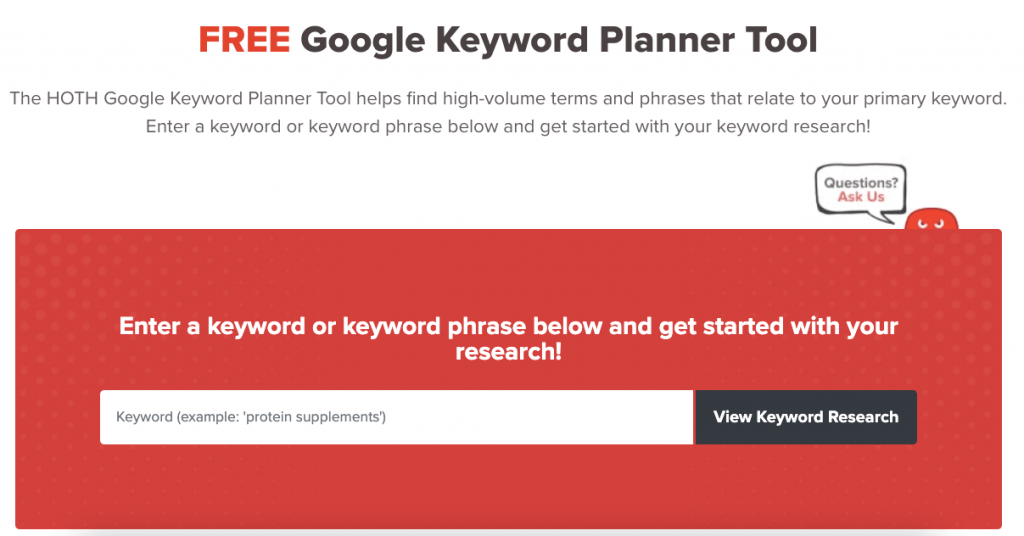
SEMRush’s massive database powers it, and it’s an excellent tool for compiling a large list of relevant keywords.
Using the planner tool
To use it, all you have to do is enter a keyword or phrase related to your industry, and you’ll get an extensive list of rankable keywords related to your search.
For instance, if we enter ‘garden’ into the tool, we get a list of 50 real keywords that users are actively searching for, complete with detailed metrics for each, which include:
- Volume. The first metric is the keyword’s search volume, which is how many users are searching for that term each month.
- CPC. This refers to cost-per-click for PPC campaigns, which is how much the keyword will cost (on average) each time a user clicks on an ad.
- Comp. Another PPC metric, comp, refers to how competitive the ad placement is for a particular keyword.
- Difficulty. Some keywords are easier to rank for than others, which is due to a lack of competition. As such, a keyword’s difficulty score represents how hard it will be to rank in one of the top spots for that keyword.
- Search trend. A high search volume can be deceptive if the keyword is on a downward trend, which is why the search trend feature is useful. It’s a line graph that represents the interest in a keyword over time. If the line is trending up, the keyword is gaining momentum. If it’s going down, the keyword is starting to lose traction.
Once you find a list of suitable keywords that have good search volume (although there is a case to be made for zero search volume keywords), a low difficulty, and are trending up in popularity – you can move on to the next step of your SEO strategy.
SEMrush
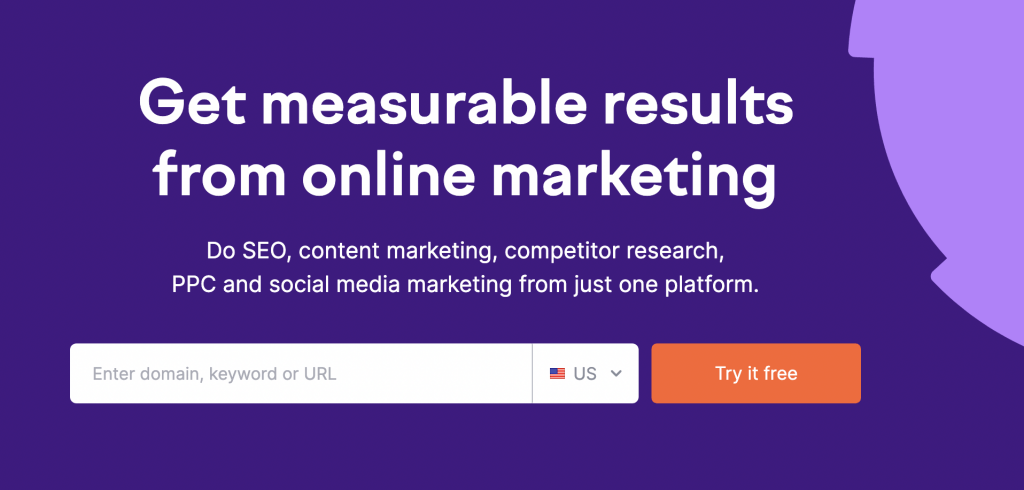
There’s a reason why legacy companies like Apple, Samsung, Forbes, and IBM choose SEMrush as their SEO tool of choice – it’s one of the best ways to increase your visibility online.
The platform provides keyword research, tracks competitor strategies, runs SEO audits on your content, & looks for backlink opportunities all in one convenient location.
Besides that, you can use SEMrush to manage your content marketing efforts, initiate PPC campaigns, and manage your social media presence. The platform also provides in-depth SEO metrics such as the following:
- Domain authority
- Total organic search traffic
- Total paid search traffic
- Backlinks
- Traffic distribution by geographic location
- SERP features
- A growth report
These advanced metrics will help you effectively gauge the success of your SEO efforts as well as develop innovative new strategies.
And we’ve got even better news: a special SEMrush offer, so you can try it for free and see for yourself how powerful this tool is. Just click here to get started.
HOTH SEO Audit Tool
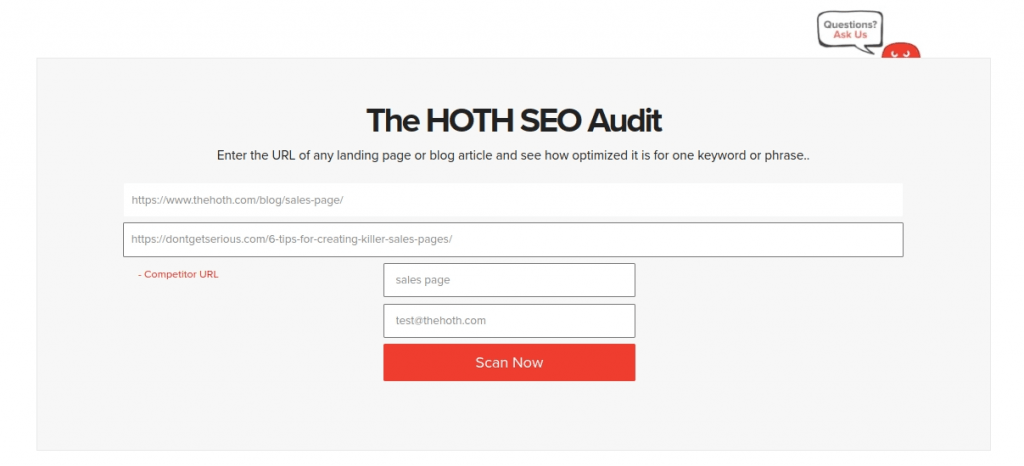
Conducting a thorough audit of your existing content is an integral part of SEO, especially once you know which keywords you want to target.
To discover the areas that you need to optimize the most, you can use our SEO Audit Tool.
Once you enter your URL and the keywords you want to include, the tool will work its magic. You’ll get to see your overall SEO score (on a scale of 1 – 100), as well as how well you’ve used your keyword in your content.
The tool will let you know if:
- You didn’t use your target keyword in your title tag
- If your title tag doesn’t begin with your keyword
- If your title tag/metadata has too many characters
The audit tool also provides a thorough page analysis of your backlinks, outbound links, Page Trust score, and domain authority score.
Last but not least, the Tasks section provides a checklist of integral action items for your SEO profile. These include:
- Improving site speed
- Cutting down on page requests
- Not overusing your target keyword (no more than 2 – 4 times, any more is overkill and may get flagged as spam)
- Whether you have a link to a sitemap
With all these insights, you’ll be able to properly optimize your existing content to increase its chances of ranking higher on Google and other search engines.
Google Search Console
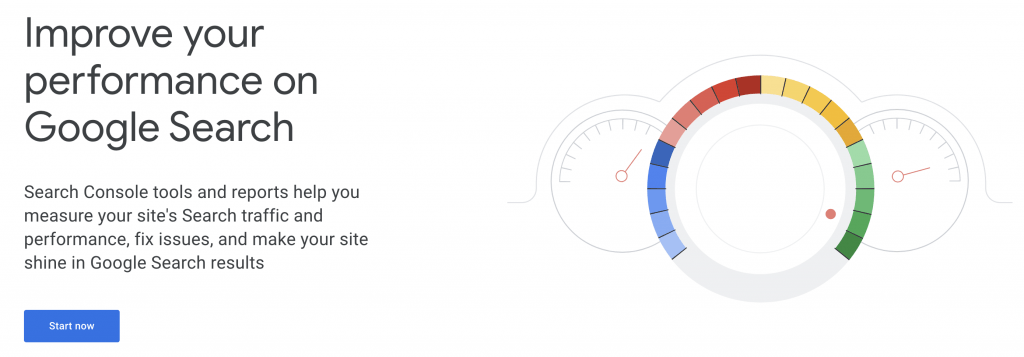
If there’s one free tool from Google that every marketing agency should use, it would undoubtedly be Google Search Console (GSC). It allows webmasters to monitor their website’s search engine rankings, visibility on Google, and technical issues.
GSC will even send you automated notifications in real time whenever they detect a technical problem with one of your web pages.
This is a lifesaver for technical SEO, as your site won’t experience any issues for long without you knowing, which can help you avoid sudden, drastic drops in rankings (believe us, it happens).
GSC is so valuable because it provides detailed information on how Google views your website. For instance, you can use GSC to quickly determine if Google was able to index your website or not.
If your website isn’t getting indexed, the most brilliant SEO & content marketing strategy in the world won’t amount to anything, which is why GSC is such an essential tool for marketers and SEOs.
If you discover that Google hasn’t indexed your site, you can remedy that by uploading a copy of your sitemap to GSC. This is a good rule of thumb, even if you are indexed, as a sitemap will help Google’s crawlers better understand your site’s content.
Free Backlink Profile Checker
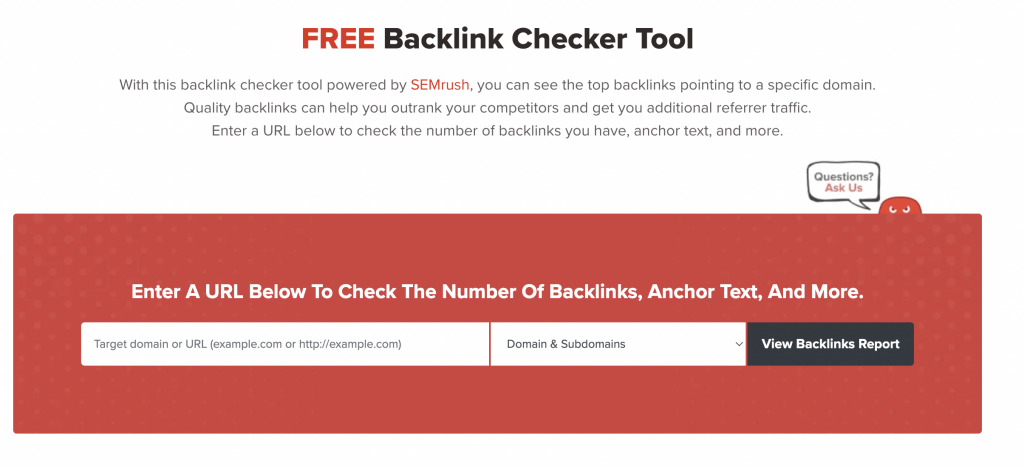
Link-building is an extremely important aspect of SEO, as high-authority backlinks will have a positive effect on your search rankings.
Yet, building quality backlinks is a time-consuming and difficult process.
The best way to give yourself an advantage in the link-building game is to check out and target backlinks from your competitors. It’s also necessary to have a way to check the number of dofollow backlinks that you have.
Our free Backlink Profile Checker can perform both functions for you. It will provide the backlink profile of any URL you enter into it, whether it’s yours or not.
This is valuable for confirming that your hard-earned backlinks are active and for analyzing your competitors’ backlinks. If you discover some high-authority backlinks that you want to target, you can try to outdo their content and snag the link for yourself – which is the skyscraper method.
Team Collaboration & Project Management Tools
For a marketing campaign to reach its desired outcome, you need to have perfectly optimized workflows and solid communication with your team members.
Those tasks are surprisingly difficult without cloud-based, all-in-one project management tools. For instance, trying to assign and monitor tasks through traditional means can quickly turn into a chaotic mess.
To check any project’s progress, you’ll have to sort through countless email threads, Slack messages, and Excel spreadsheets. As a result, you’ll spend quite a bit of your precious time just trying to stay organized.
Here’s a list of the best project management tools on the market to help you save time and increase productivity.
Asana
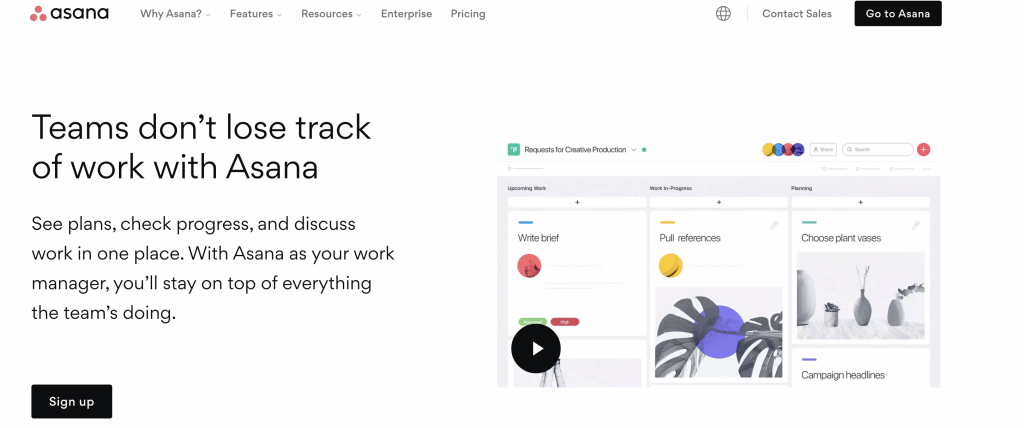
Asana is one of the most popular project management platforms due to its extensive features yet intuitive and easy-to-use interface.
Whether you’re keeping track of freelance writers or your in-house sales team, Asana can easily handle your needs. You can assign team members tasks that contain detailed instructions and attachments – complete with due dates and a built-in messaging system.
Asana also has several different dashboard views for visualizing your workflows, such as:
- A calendar view
- A list view
- Kanban boards
- Gantt charts
With all these options, you have the freedom to organize your projects the way you want. If deadlines are the most pressing factor, you’ll benefit from the calendar view. If you’re more of a visual learner, the Gantt charts and Kanban boards will likely suit your fancy.
Asana integrates with plenty of apps and platforms, including Salesforce, Hubspot, Canva, and Zapier – which allows for further integrations, like Mailchimp.
Asana has a free version, which is perfect for startups, freelancers, and small businesses.
Trello
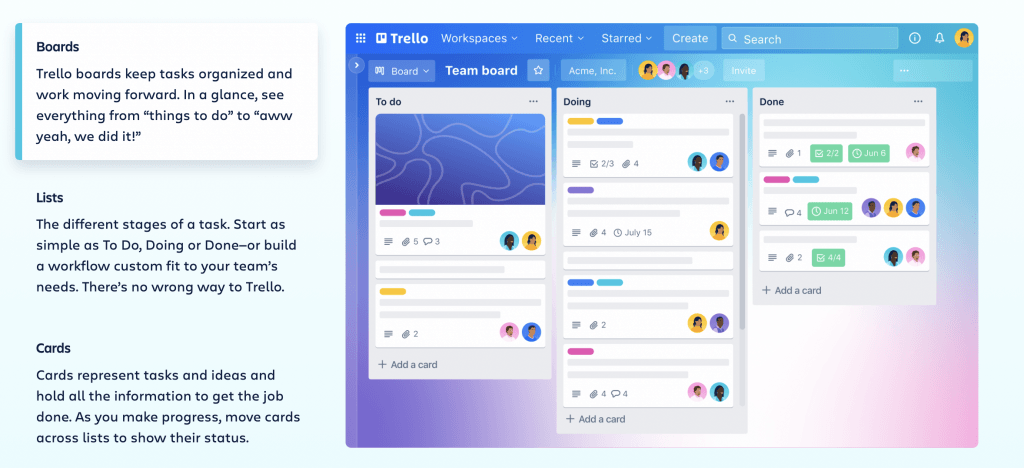
If you **** the Kanban visual style and have simple project management needs, Trello is an excellent tool.
Trello relies strictly on Kanban boards, and the free version is excellent for marketing agencies that do not want to spend money on another application.
Yet, Trello’s main selling point is its ease of use.
If you don’t feel like sitting through tutorials to learn a new program and want a simple, effective way to manage your tasks, Trello is the way to go. Its interface is so user-friendly that you’ll be able to jump in and start using it on day one.
Website Creation Tools
You can’t have a robust digital marketing strategy without a website of your own, which is why you’ll need a high-quality CMS (content management system).
Social media posts and marketing are certainly effective, but they could never take the place of having an original website, so let’s take a look at the best website design tools.
WordPress

Want to start a blog or an eCommerce website to make money online?
If so, then you’ll benefit from trying out WordPress, especially if you don’t know any programming languages.
WordPress is an open-source CMS that powers over 810 million websites worldwide. It’s a fairly complex program, so new users will have to take some time viewing video tutorials and FAQs.
Yet, WordPress has top-tier security and support, including a community of experts ready to answer your questions.
If you’re a web developer that does know how to write code, WordPress has a ton of advanced features you can use to customize your site the way you want.
Squarespace
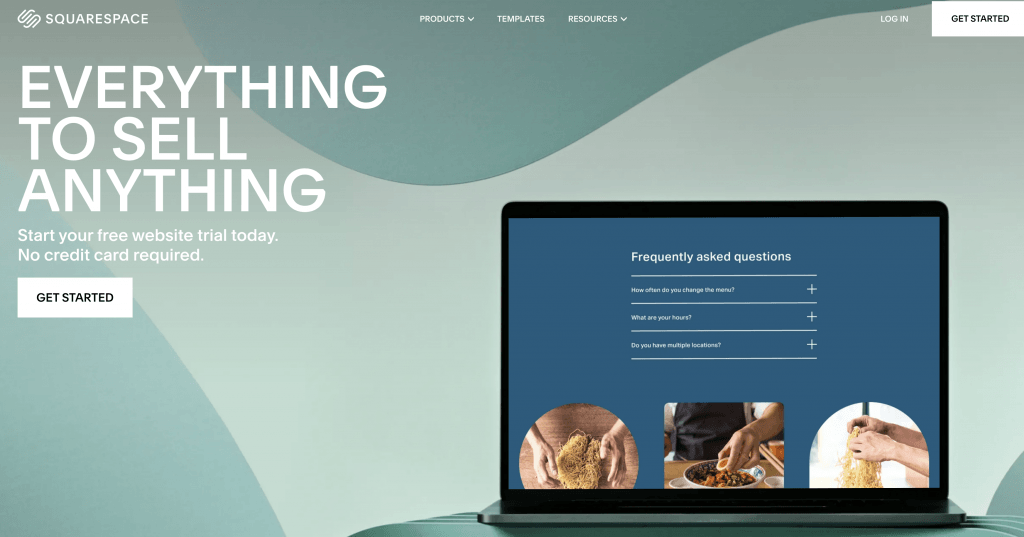
Another popular CMS is Squarespace, which is a more user-friendly alternative to WordPress.
If you don’t feel like viewing lengthy tutorials to learn how to design a simple blog, Squarespace is the way to go.
Other perks include unlimited storage space and tons of beautiful templates and stock photos. SEO-wise, Squarespace offers meta descriptions and custom URLs for every web page you create, and Google Analytics is available for all its pricing plans.
Final Thoughts: Top Tools for Marketing Agencies
If you want to scale your marketing agency to take on more clients, you need to equip your team with the right tools to keep up with the growing demand.
All the tools on this list are essentials for marketers, so don’t forget to include at least one tool from each category in your bag of tricks.
Do you need help devising a winning digital marketing strategy for your agency?
Then you need to drop everything and check out our white-label marketing services at The HOTH. Our team consists of marketing gurus and SEO experts that are always available to chat, so don’t wait to book a consulting call today.



